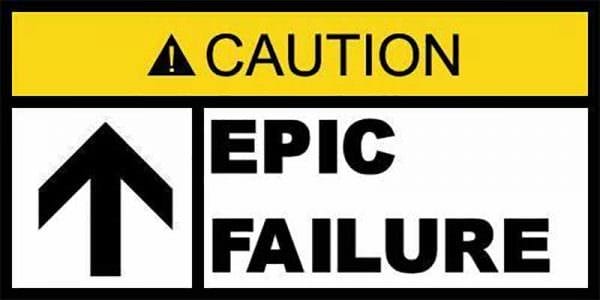Opinion

One of the bastion states of “innovative” anti-gun laws, New Jersey, has officially implemented the delusional concept of fighting crime via the unproven—some might argue disproven—concept of microstamping.
We say “innovative” because the microstamping concept has been around for a few decades, and is little more than an offshoot of ballistic fingerprinting; another failed “crime fighting” concept that has been suggested for even longer, and was declared a failure in Maryland and New York in 2015 and 2012, respectively.
As we explained last year in an article about the New Jersey microstamping law, the idea is that it would combat crime by providing identifying information about a gun used at a crime scene, a theory disputed by the gun industry and others. For instance, “criminals can and will easily defeat the ‘micro-stamping’ technology by simply filing away or scratching … the surface of the firearm where the laser engraving has been placed.” The microstamping theory, explains an NRA fact sheet, “does not survive real world application.”
Undaunted by the inevitable failure of microstamping, New Jersey pressed forward.


In 2022, Governor Phil Murphy (D) signed into law a requirement that gun dealers stock “microstamping-enabled firearms” for sale, after the state’s Attorney General investigates the technological feasibility of such firearms and certifies they are commercially available.
That law defines a “microstamping-enabled firearm” as one containing a component “that will produce a microstamp on at least one location of the expended cartridge case each time the firearm is fired.” The law directs the attorney general to complete, within the 180 days following enactment, “an investigation concerning the ‘technological viability of microstamping-enabled firearms,’ that must include ‘live-fire testing evidence.’” The attorney general must also appoint a “microstamping examiner” responsible for creating a roster of microstamping-enabled firearms that meet the state’s performance standards. As soon as one or more firearms are placed on the roster, the attorney general must certify that such firearms are commercially available.
Once this certification occurs, each licensed retail dealer of firearms in New Jersey must make available for purchase (and continue to keep in inventory) at least one firearm from the roster; “display the firearm in a conspicuous manner that makes it easily visible to customers and distinguishable from traditional firearms;” and post “clear and conspicuous signage” regarding the features of microstamping-enabled firearms that are not offered by traditional firearms. The state police are authorized to conduct inspections of all retail firearm dealers to ensure compliance with the law, with violations punishable by fines and license suspensions. The law also makes it a felony for anyone to remove, damage, alter, or otherwise tamper with a microstamping-enabled firearm to prevent or alter the production of a microstamp.
An early sign of things not being as they should be is that implementation, even at the initial stages of the law, had already gone awry. News reporter Politico advised in June 2023 that its public records request for the findings of the technological feasibility investigation (due in January 2023 under the statutory deadline) resulted in no responsive documents being found. Instead, a statement from Attorney General’s Matt Platkin’s office confirmed only that “[w]ork on the microstamping regulations and investigation is proceeding” and “reviewing the viability of the technology… is currently underway.” The relevant findings were expected sometime “this summer (2023).”
That deadline came and went with no report from Platkin, but more than a year after the original deadline had passed, the NJ AG finally issued his report, stating, unsurprisingly, that “viable microstamping-enabled technology exists.”
Of course, an anti-gun attorney general tasked by an anti-gun legislature and governor to “investigate” whether an anti-gun policy is technologically possible is virtually guaranteed to come to the conclusion that it is. But across the country, in California, a similar law was looked at to determine not just if it was technologically possible, but whether it was constitutional.
The results, thus far, do not bode well for the New Jersey law.
Boland v. Bonta arose out of a Second Amendment-based challenge to California’s “Unsafe Handgun Act,” requiring all new models of handguns sold to have certain features, including “microstamping capability.” In 2013, Kamala Harris, then California Attorney General, certified that the microstamping technology was available (just like NJ AG Platkin, more than a decade later) absent any patent restrictions, yet since then, no new handgun models have been added to the roster of handguns that may be sold in the state. The plaintiffs sought a preliminary injunction enjoining California from enforcing, as unconstitutional, these requirements.
U.S. District Court judge Cormac Carney, who issued the ruling, commented on the extraordinary gap between the actual and the theoretical the case presented.
“Although the California Department of Justice certified on May 17, 2013, that the technology used to create the imprint is available to more than one manufacturer unencumbered by any patent restrictions, the technology still was not available… Indeed, to this day, a decade after the requirement took effect, no firearm manufacturer in the world makes a firearm with this capability.”
The evidence before the court included a peer-reviewed study by Michael Beddow, a forensic firearms examiner, who testified that microstamping technology “could not be directly implemented into every make and model of new firearms or semi-automatic handguns without additional research to determine if it would work,” and that microstamping “was not suitable for mass implementation.” A sworn statement from a police officer, the president of the Peace Officers Research Association of California, noted that the handgun “rules simply make no sense, from a law enforcement perspective” and dismissed the microstamping provision as “a fool’s errand.” He further commented, “Ironically, the [law] purports to ban unsafe handguns, but actually bars newer, improved and safer generations of handguns already on the roster.”
While a preliminary injunction is an “extraordinary and drastic remedy that may only be awarded upon a clear showing that the moving party is entitled to relief,” Judge Carney concluded that the plaintiffs met this standard. Applying the framework in NYSRPA v. Bruen, it was clear that the law “unquestionably infringe[d] on the right to keep and bear arms,” and had no comparable historical analogues to support it. “Historical laws regarding serial numbers, and the historical analogues justifying serial numbers, do not impose anywhere close to the substantial burden on people’s Second Amendment right that the [law’s] microstamping provision does. The microstamping provision requires handguns to have a particular feature that is simply not commercially available or even feasible to implement on a mass scale.”
California’s Attorney General Bonta appealed the ruling and sought a stay of the preliminary injunction, although a press release from Bonta’s office includes this telling statement: “The motion does not seek to immediately stop the part of the court’s decision enjoining the microstamping requirement.”
Across the country, his New Jersey counterpart describes his own microstamping law as “smart” and “commonsense” and “consistent with the Second Amendment,” and his gun control supporters agree that, “New Jersey is a national leader in supporting this potentially ground-breaking technology and should take the time to make sure its new law is implemented effectively.”
At this point, even if the technology has been certified by Platkin, there are still a few problems with realizing the anti-gun goals in New Jersey. First, despite the certification of the technology itself, there still are no handguns being manufactured that incorporate it. We will have to wait and see if any are submitted to New Jersey’s “microstamping examiner” for consideration.
The firearm that was tested to certify the technology was made by Colt, but it did not come from the factory that way. It was equipped with the necessary parts to actually microstamp the expended cartridge by a company that specializes in the technology, but does not develop or manufacture actual firearms. In other words, it has a financial interest in seeing its technology adopted. It likely does not mind if it is more widely adopted because certain anti-gun jurisdictions wish to force it on the firearms industry and consumers that have no interest in it.
Perhaps more concerning to New Jersey, however, is how the courts will determine the constitutionality of such forced implementation. Boland v. Bonta is awaiting a ruling from the Ninth Circuit Court of Appeals, and although California abandoned the microstamping provision in its appeal of the preliminary injunction against the “Unsafe Handgun Act,” whatever becomes of the case could very well have an impact on what happens with this New Jersey law.
As always, we will be sure to keep you informed of any updates from either coast.
About NRA-ILA:
Established in 1975, the Institute for Legislative Action (ILA) is the “lobbying” arm of the National Rifle Association of America. ILA is responsible for preserving the right of all law-abiding individuals in the legislative, political, and legal arenas, to purchase, possess, and use firearms for legitimate purposes as guaranteed by the Second Amendment to the U.S. Constitution. Visit: www.nra.org







